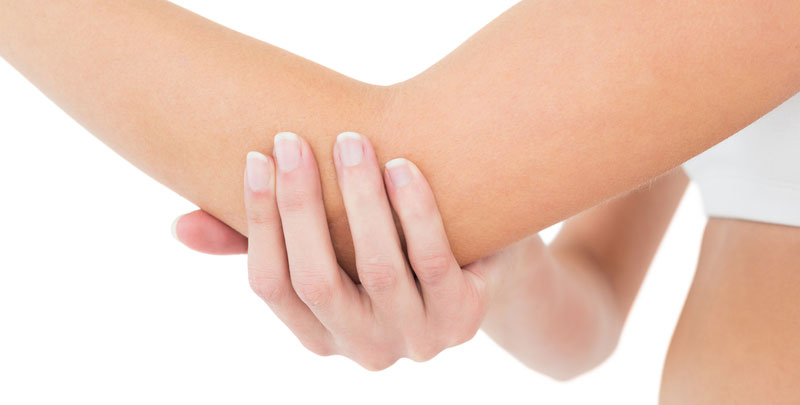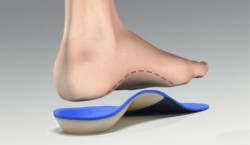Tennis Elbow Prevention & Treatment Exercises
Lateral epicondylitis, commonly referred to as “tennis elbow”, is frequently a persistent and distressing condition marked by pain on the outer side of the elbow. Despite its name, tennis elbow is not necessarily linked to playing tennis; instead, it is a relatively common issue among individuals who perform repetitive upper body activities such as golfers, hockey players, carpenters, musicians, and computer programmers. Research suggests that a combination of shockwave therapy and targeted physical therapy exercises may prove effective in alleviating symptoms associated with tennis elbow.
The initial steps in addressing tennis elbow involve the reduction of inflammation and providing rest to the affected muscles and tendons. Applying ice and compression can be beneficial in this regard. Subsequently, the introduction of shockwave therapy and physical exercises becomes crucial to fortify the muscles and minimize the likelihood of a recurrence.
Exercises for tennis elbow
Important!
Always consult Dr. Kaila before starting an exercise program. It’s important to get a full evaluation to rule out a serious injury such as a muscle or tendon tear.
Call Central Parck Chiropractic, Burnaby office at 604 439-1230
or
Book an Appointment Online
It is important not to initiate activities until the inflammation has subsided, as engaging in such activities may aggravate the condition. If pain recurs after activity, it is advised to rest and apply ice to the elbow and forearm. Additionally, consulting with a physical or occupational therapist is recommended to ensure the correct execution of exercises. Frequently, modifying the way daily activities are performed can significantly alleviate symptoms, and your therapist can assist in identifying movements that may be contributing to the pain.
Fist Clench Exercise:
Poor grip strength often accompanies tennis elbow. Enhancing forearm muscles through grip strength exercises can contribute to improved daily activities.
- Sit at a table with your forearm resting on it.
- Hold a rolled-up towel or small ball in your hand.
- Squeeze the towel for 10 seconds.
- Release and repeat 10 times, then switch to the other arm.
Supination with a Dumbbell Exercise:
The supinator muscle, crucial for turning the palm up, is involved in movements associated with tennis elbow. Practice isometric supination before using weights.
- Sit in a chair, holding a 2-pound dumbbell vertically with your elbow on your knee.
- Let the dumbbell rotate your arm outward, turning your palm up.
- Rotate your hand back down.
- Repeat 20 times on each side, isolating the movement to your lower arm.
Wrist Extension Exercise:
Wrist extensors, responsible for bending the wrist, are often overused in racket sports. Strengthen these muscles with the following exercise.
- Sit, holding a 2-pound dumbbell, palm facing down, elbow on your knee.
- Extend your wrist by curling it toward your body.
- Return and repeat 10 times on each side, isolating the movement to your wrist.
Wrist Flexion Exercise:
Counteracting wrist extensors, the wrist flexors are prone to overuse. Strengthen these muscles with the following exercise.
- Sit, holding a 2-pound dumbbell, palm facing up, elbow on your knee.
- Flex your wrist by curling it toward your body.
- Return and repeat 10 times on each side, isolating the movement to your wrist.
Towel Twist Exercise:
Engage both wrist extensors and flexors with a towel twist exercise, aiding in overall wrist flexibility.
- Sit in a chair, holding a towel with both hands.
- Twist the towel in opposite directions, as if wringing out water.
- Repeat 10 times, then reverse direction for another 10 repetitions.

Tennis Elbow Prevention
To prevent tennis elbow, consider the following guidelines & measures:
- Ensure Proper Equipment and Technique: Use appropriate equipment and employ correct techniques for each sport or job activity.
- Perform Forearm-Strengthening Exercises: Include exercises in your routine that focus on maintaining forearm strength and flexibility.
- Apply Ice After Intense Physical Activity: Ice your elbow following vigorous physical activities to reduce potential inflammation.
- Rest If Experiencing Pain: If bending or straightening your arm causes pain, allow your elbow to rest to prevent further strain.
By adhering to these precautions and avoiding undue stress on your elbow tendons, you can significantly reduce the likelihood of developing tennis elbow or experiencing its recurrence.
Dr. Kaila Recommends
If you’ve had tennis elbow in the past or are recovering from it now, try these exercises to help strengthen your forearm muscles and improve function. Strengthening the muscles and avoiding repetitive motions can go a long way in helping you avoid this issue in the future.
Got questions?
Call Central Parck Chiropractic, Burnaby office at 604 439-1230
or
Book an Appointment Online


